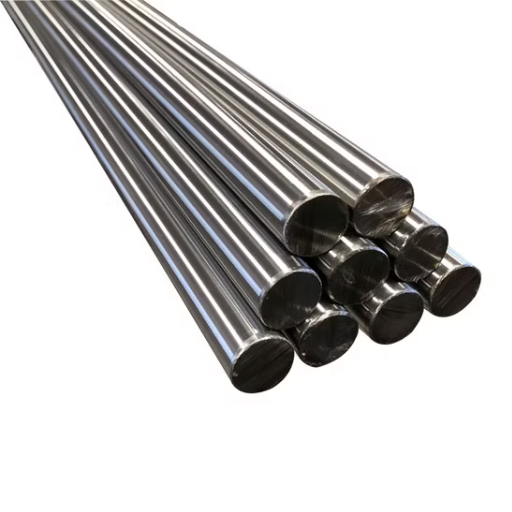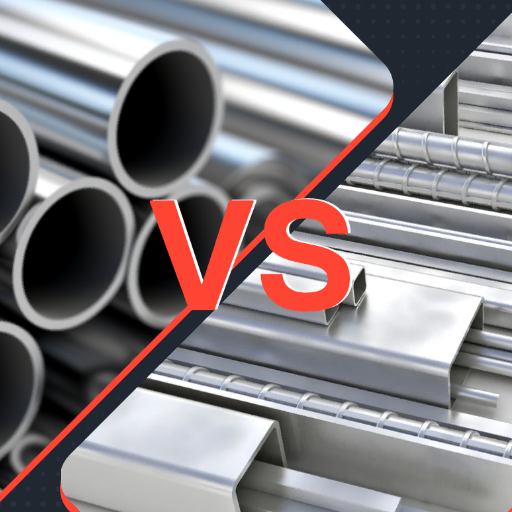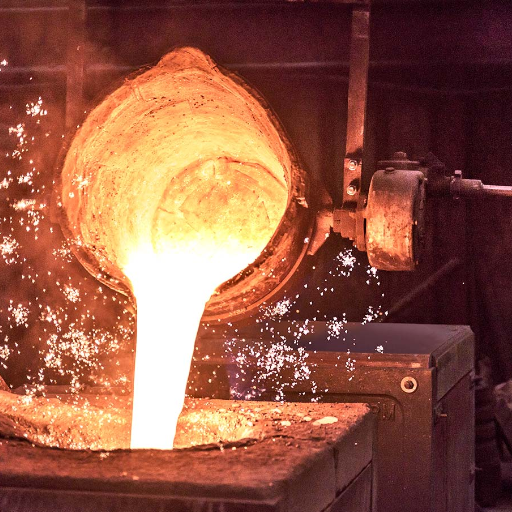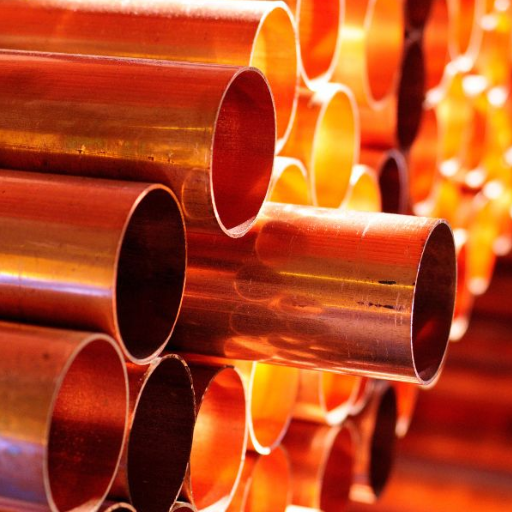When one needs to select materials for manufacturing, construction, or even tools for everyday life, it becomes essential for an individual to have knowledge regarding metal properties. Of all metals that exist, carbon steel and stainless steel are probably the most used, but they are often confused or misused with each other. Although at a glance, using these materials might seem exactly the same, on closer examination, there are plenty of differences in terms of composition, durability, use, and maintenance actually required. This paper looks into these two types of steel, laying emphasis on their distinguishing features as well as practical uses. The guide will provide sufficient insight for any engineer, craftsperson, or even the casual learner in materials science to arrive at an informed conclusion.
What’s Carbon Steel?
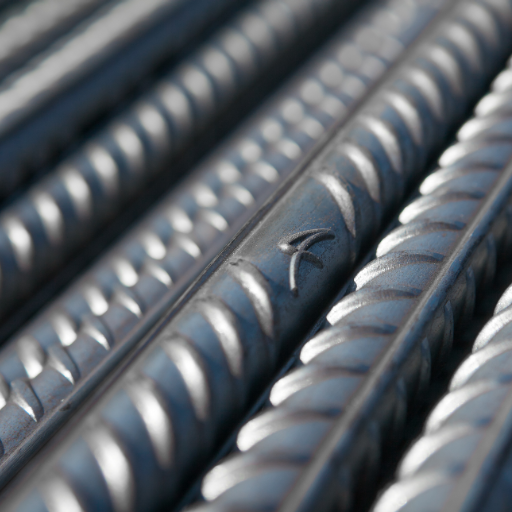
Carbon steel is a form of steel that mainly contains iron and carbon, with the carbon usually anywhere between 0.05% and 2.0%. Its properties are basically a function of the carbon content of steel that determines the strength, hardness, and ductility of steel. Due to its ductility and cost-effectiveness, carbon steels are widely used as a plastic building material, in car manufacture, and in machinery. It is conventionally divided into low, medium, and high carbon steel types depending on its strength and hardness requirements for a particular purpose.
Understanding Carbon Content in Carbon Steel
Carbon contents in carbon steel control its mechanical properties and are categorized into different types. It is generally considered that steel with less than 0.25% carbon is relatively different from high-carbon steel, as it possesses high ductility and malleability. Such qualities impart suitability to the steel for uses in such large horizons as structural components, pipelines, and automotive body parts. Medium-carbon steel (0.25%-0.60% C) has medium properties, trading off strength versus ductility, and finds application in the manufacture of gears, axles, and machinery parts. High-carbon steel (0.60%-2.0% C), on the other hand, is hard with greater wear resistance, thus suitable for high-wear applications such as cutting tools, springs, and wires. Present technological developments have enabled control of carbon content. Thus, an engineer can further enhance the properties of steel in line with the needs of a modern industrial application. Apart from helping a manufacturer decide on the type of material to use for his engineering requirements, understanding these classifications helps him in an assessment of whether the steel would meet basic performance and reliability.
Types of Carbon Steel: Low Carbon vs High Carbon
Low carbon steel contains low amounts of carbon; thus, it places carbon steel or iron in the mild steel category of the steel world. It has carbon content above 0.05% and below 0.25%. These kinds of steel are relatively ductile and malleable and can be easily machined or welded. Being limp compared to other types of steel, they possess less hardness and strength, but at the same time, they are highly economical and infinite in applications-those of construction materials, paneling of automobiles, pipelines, etc.
High-carbon steel, however, bears the 0.6 to 1.0% carbon content. This relatively larger portion of carbon endows hardness and tensile strength with a reduction in ductility and cracking propensity under strain. High-carbon steel is used widely in manufacturing for further demanding wear-resistance characteristics-cum applications such as cutting tools, industrial springs, and high-strength wires. It also needs to go through heat treatment processes to become even more potent and hard in certain specialized uses.
Common Uses of Carbon Steel
- Construction and Infrastructure
Carbon steel is widely applied in construction works in all structural works like beams, columns, walls, foundation, and reinforcing bars. Due to good strength-to-weight characteristics and cheapness, it is suitable for skyscrapers, bridges, and buildings. Globally, nearly 50% of the carbon steel produced is used in construction.
- Automotive Manufacturing
Medium carbon steel is used in the automotive industry for gear, axle, and crankshaft parts. Such parts are also made from medium carbon steel because of their toughness and machinability, allowing them to resist damage due to mechanical shock. It is estimated that the worldwide automotive sector uses about 12% of all carbon steel produced.
- Machinery and Equipment
Carbon steels are used for production of machine tools, industrial equipment, and mechanical components that must be reliable when combined with heavy loads. High-carbon steels are subjected to heat treatment for manufacture of wear-resistant tools and dies. These types of materials find production applications in mining, agriculture, and manufacture.
- Energy Sector
Carbon steels are being used by the energy industry for pipelines, storage tanks, and pressure vessels due to their good strength under high-pressure applications and adequate properties at varying temperatures. More than 7% of carbon steel goes into these pipeline operations, mostly for the transportation of oil and natural gas.
- Cutting Tools and Abrasives
When exceptionally hard, high-carbon steels make the best cutting and drilling tools, knife blades, saw blades, drill bits, etc., because they retain their fine edge longer. When properly heat-treated, they reach hardness values of 60 and above on the Rockwell hardness scale, performing well for a great length of time.
What’s Stainless Steel?
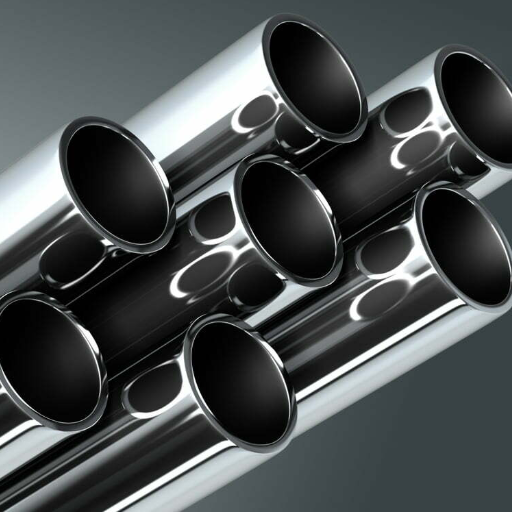
Stainless steel is a class of corrosion-resistant alloy and is chiefly made up of iron, chromium, and variable quantities of elements such as nickel, molybdenum, and carbon. When the amount of chromium is more than 10.5%, it reacts with atmospheric oxygen to develop the passivating oxide film; hence, it does not rust and cures peripheral durability issues. Stainless steel, just about any grade, is earning a name for the very worthy qualities of strength, hygienic properties, resistance to high temperatures, etc., and these qualities follow through into important applications such as kitchenware, medical implements, construction, chemical processing, etc. The versatility, coupled with low maintenance costs, has earned it a place as a prime candidate in a variety of industries.
Properties of Stainless Steel and Its Alloys
- Corrosion Resistance
Since there is the chromium oxide layer on the surface of stainless steel, it shows excellent resistance to corrosion. Steel grades containing higher chromium content (like 316 or duplex stainless steels) provide better resistance in aggressive environments such as marine or acidic industrial environments.
- Strength and Toughness
Depending upon the alloy, stainless steels can have very good tensile strength and toughness. For example:
-
- Austenitic stainless steels (e.g., Grade 304): Tensile strength of approximately 505 MPa.
- Martensitic stainless steels (e.g., Grade 420): Tensile strength ranges between 700–1000 MPa, with higher hardness levels.
- Temperature Resistance
Stainless steels can resist operations under a wide temperature range. For example:
-
- High-temperature resistance: Alloys such as 310 and 321 perform effectively in temperatures up to 1000°C.
- Cryogenic toughness: Austenitic grades maintain ductility and toughness even at extremely low temperatures.
- Hygienic Properties
Hygienic stainless steel with its non-porous surface does not allow bacteria to multiply; hence stainless steel is considered for use in medical instruments, food preparation equipment, and pharmaceuticals.
- Formability and Weldability
Most varieties of stainless steel, especially the austenitic grades, possess higher formability and weldability compared to other kinds of alloys and hence are promising for very complex manufacturing processes like deep drawing, bending, and TIG welding.
Corrosion Resistance in Stainless Steel
Considerations for stainless steel corrosion resistance require the grade-dependent chromium content that may vary between 10.5% and 30%. The chromium forms an interface oxide film with atmospheric oxygen, such an oxide layer being transparent, passive, and self-healing on the stainless steel surface. It protects against moisture and corrosive agents, thus helping to prevent rust and deterioration.
Different grades stainless steel have different resistivities to corrosion depending on the specifications of the environment. For example, molybdenum-containing steel 316 is the best for resistance to chloride-induced pitting and crevice corrosion, therefore ideal for marine environments and chemical processing equipment. Being variously less resistant than austenitic types, ferritic and martensitic grades offer adequate protection under moderate conditions. Thus, the balance between cost and performance afforded by them is satisfactory for several industrial applications.
Applications of Stainless Steel in Everyday Life
- Kitchenware and Culinary Equipment
Essentially, cookware, cutlery, and appliances to be used under non-reactive surfaces and ease of cleaning must be stainless steel. For example, 304 SS stainless steel pots, pans, and kitchen sinks are very commonly used for sanitary purposes as well as for durability.
- Medical Tools and Equipment
Given their very nature and characteristics, stainless steels offer perfect solutions and are very commonly used as medical instruments, surgical tools, and implants. Stainless steel grade 316L is used in medical procedures primarily because it has less carbon content-that carbon tends to cause contamination of instruments in medical operative work.
- Architectural and Construction Elements
Thus, stainless steel finds construction applications for skyscrapers, bridges, and other architectural forms. Environmental insults in the form of pollution and weathering must be resisted toward service for ages. For example, being stainless steel-clad for the exterior of the Chrysler Building in New York City was considered good for performing satisfactory service and style.
- Transportation Industry
The strength-to-weight ratio and corrosion resistance of stainless steel are taken advantage of for train, ship, and automotive components. For example, stainless steel is used widely for the high-speed trains to ensure safety and reduce maintenance effort.
- Energy and Industrial Processes
Carbon Steel vs Stainless Steel: Key Differences

- Composition
Carbon steel comprises mostly iron and carbon, with negligible amounts of other alloying elements, thus being a rather simple system. In contrast, stainless steel contains chromium, usually at least 10.5%, with the intention of imparting corrosion resistance.
- Corrosion Resistance
Carbon steel rusts and needs finishes and upkeep; on the other hand, a stainless steel is corrosion-resisting, having chromium content in it. Thus, this is excellent for moist or chemical exposure surroundings.
- Strength and Durability
Where carbon steel is often harder than stainless steel, it is also very brittle and less ductile. Stainless steel follows with better impact resistance and tensile strength when tested under extreme conditions.
- Applications
Compare the Differences Between Carbon Steel and Stainless Steel
|
Parameter |
Carbon Steel |
Stainless Steel |
|---|---|---|
|
Composition |
Primarily iron and carbon |
Iron, chromium (at least 10.5%), and nickel |
|
Corrosion Resistance |
Low resistance, prone to rust |
High resistance, resists rust and staining |
|
Strength |
Higher tensile strength |
Lower tensile strength, but still durable |
|
Cost |
Generally lower cost |
More expensive due to alloying elements |
|
Weight |
Slightly heavier |
Slightly lighter |
|
Maintenance |
Requires regular upkeep |
Low-maintenance due to corrosion resistance |
|
Magnetic Properties |
Usually magnetic |
Some grades are non-magnetic |
|
Aesthetic Finish |
Limited options, typically matte |
Variety of finishes, often polished |
|
Weldability |
Generally good, depending on carbon content |
Excellent across most grades |
|
Thermal Conductivity |
Higher thermal conductivity |
Lower thermal conductivity |
|
Durability |
High durability under stress |
Resistant to wear and environmental factors |
|
Applications |
Structural uses, tools, machinery |
Medical, food-processing, marine equipment |
Hardness and Durability Comparison
When it comes to hardness, more often than not, carbon steel can outperform stainless steel, especially when it has been subjected to various heat treatments. In laying the grounds for such hardness, carbon steel is even considered more appropriate where wear resistance is demanded, such as for cutting tools or components of heavy machinery. High carbon steels usually have a hardness of level 7 or more according to the Mohs scale, contingent on the particular composition of steel and the subsequent treatment it underwent.
By being softer than carbon steel, stainless steel compensates for this lack through excellent resistance and toughness under variable environmental conditions. The chromium present in it makes it more resistance to plastic deformation or cracking in corrosive environments, thus providing great assistance in working environments subjected to mechanical stress and corrosive agents. For example, austenitic stainless steels, the most common grade, are made balancing durability with a relatively moderate hardness, somewhere on 5.5 to 6.3 Mohs.
Choosing Between Carbon Steel and Stainless Steel
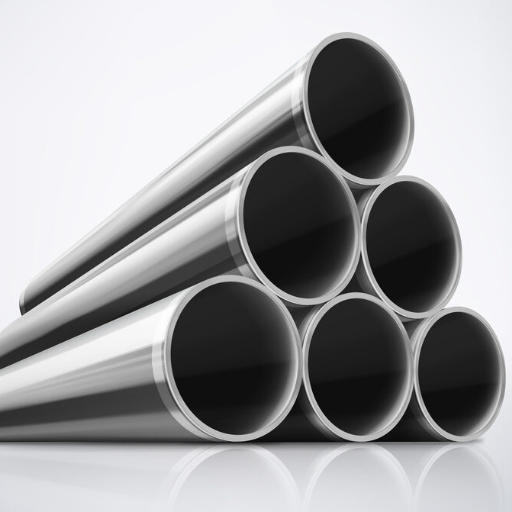
Mostly, whether carbon steel or stainless steel is chosen depends mainly on the particular needs of the application. Carbon steel is an excellent alternative where strength, cheapness, and ease of machining are highly regarded. It is considered suitable in construction, automobile parts, and tools because of its high tensile strength and cost-effectiveness.
In environments where corrosion and exposure to moisture or chemicals become important concerns, stainless steel is the best choice. Its chromium content provides prolonged performance in medical equipment, marine applications, and food processing machinery. Furthermore, stainless steel has also been touted for its cleaner aesthetic, for use in cases where appearances are important or executions are visible.
What to Consider When Choosing Between Carbon Steel and Stainless Steel?
- Corrosion Resistance
In situations where corrosion is an issue for surface treatment, stainless steel is the choice due to its chromium content, forming an oxide layer passive against rusting. Where carbon steel is without this protective coating, it tends to quickly rust and would have to be covered or treated for protection in corrosive environments.
- Strength and Durability
Given that carbon steel gives more tensile strength and hardness, it would be ideally suited for construction or heavy machine applications subject to very high stress. However, this comes at the price of becoming brittle, especially when it is a higher-carbon type. Whereas stainless steel generally offers less strength but greater ductility and is preferable in applications where resistance to flexing under stress is involved.
- Temperature Resistance
Stainless steel wins in higher temperature environments and maintains better structural assembly and resistance to oxidation than carbon steel. A stainless steel grade capable of performing at different temperatures is marketed by temperature differences affecting the food industry, the aerospace industry, and so on, among others.
- Cost Efficiency
The good thing about carbon steel is always that it is cheaper and can be found everywhere. With this straightforward purchase price is the life cycle cost involving upkeep, coatings, or even substitutions as a result of corrosion could have the stainless steel leading price worth for specific applications.
- Application-Specific Considerations
Basically, stainless steel is used in wet marine, medical, and food industrial projects due to its hygienic properties, polished surface, and resistance against moisture. Whereas carbon steel soars in structural projects which need high strength with less importance given to corrosion or aesthetics.
What role do alloying elements play in stainless steel?
Performance and properties of stainless steel depend on the alloying elements; chromium is the first alloying element that builds an oxide layer on the surface to protect against corrosion. Generally, for stainless steels to remain consistent in forming a self-healing protective layer when exposed to oxygen, a minimum of about 10.5% by weight of chromium must be present. Other elements of importance are nickel, which lends ductility and toughness, mostly in austenitic grades, and also improves resistance to acidic and high-temperature environments.
Molybdenum is added to enhance resistance against pitting and crevice corrosion when exposed to those chloride-containing media such as marine environments. Nitrogen increases strength and pitting resistance, hence being one of the main elements in duplex stainless steels. Manganese and silicon serve processing purposes such as deoxidation during manufacture and help stabilize certain microstructures. The balance of these alloying elements provides stainless steel with the mechanical and environmental properties needed for present demand from every application, ranging from industrial to medical apparatus.
What Are the Maintenance Requirements for Carbon Steel and Stainless Steel?
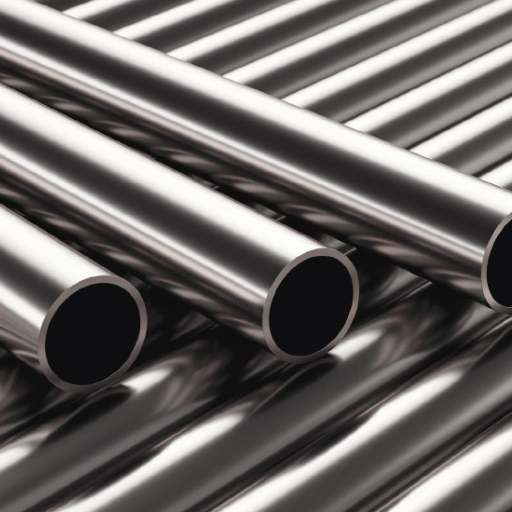
Carbon steel needs to be maintained on an ongoing basis to keep rust from developing since it contains no rust-proofing. It is common practice to apply a few layers of paint or oil to a carbon steel surface to protect it from harsh conditions like moisture and oxygen. Inspection of carbon steel carbon steels at intervals is also quite important; these intervals may not be regular, but they allow for early detection and treatment of wear, pitting, or rust. Carbon steel in suspected areas may require frequent washing or some form of protection applied on very short notice.
Is stainless steel easier to maintain than carbon steel?
In terms of maintenance, stainless steel is easier to maintain than carbon steel in most cases due to the extra effort on corrosion resistance it offers. From chromium and stainless steels, an oxide layer is created in the presence of oxygen, which protects against rust and deterioration in mildly humid or corrosive atmospheres in the least. This also curtails or cuts down on the frequency of application of film coatings or other treatments, which in many instances classifies stainless steel as a low-maintenance material. Carbon steel, without any protection, readily rusts when exposed to the elements unless plant or treatment is done on it; it needs to be painted or sealed on a regular basis in any event to forestall corrosion, mainly in outside places or high-moisture environments. Though carbon steel needs more care, it is usually quite cheap and is therefore a critical criterion in choosing the materials for projects with limited budgets. On the other hand, in applications where durability and low maintenance are at the forefront, stainless steel takes precedence.
What cleaning methods should be used for stainless steel and carbon steel?
Cleaning methods must be such that stainless steel retains its corrosion resistance while maintaining an aesthetic look. The primary cleaning technique is warm water and maybe a mild detergent. A soft cloth or sponge may be used for gently scrubbing the surface; thereafter, there should be a thorough rinse with clean water to remove any soap residues. For the heavier stains or grease, non-abrasive cleaners containing alkalis or alkaline salts should be employed. Last but not least, wipe dry with a microfiber cloth to avoid having water spots or streaks. Steel wool or harsh abrasives should never be used; these would simply leave scratches that pixelate and locally nullify the chromium oxide layer that gives stainless steel its resistance to rust and staining. Maintenance cleaning along the grain of the stainless steel from time to time shall keep the material looking and functioning well.
Reference Sources
- Carbon Steel vs Stainless Steel – Discusses cost, applications, and structural uses of carbon steel compared to stainless steel.
- Stainless Steel vs. Carbon Steel: Choosing the Right Material – Explores factors like cost, durability, and performance in material selection.
- Carbon Steel Explained: Properties and Applications – Details the advantages, disadvantages, and applications of carbon steel.
- Low, Medium, and High-Carbon Steel – Explains the differences in carbon content and their impact on properties.
Frequently Asked Questions (FAQs)
Q: What’s the difference between carbon steel and stainless steel?
A: The main difference lies in their composition; carbon steel contains a higher percentage of carbon, while stainless steel includes chromium that makes it resistant to corrosion. Carbon steel may rust easily compared to stainless steel alloys due to this added chromium.
Q: Why is stainless steel considered more resistant to rust than carbon steel?
A: Stainless steel is resistant to rust because it contains at least 10.5% chromium, which forms a protective layer of chromium oxide on the surface. This layer helps prevent corrosion, unlike carbon steel, which lacks this protective feature.
Q: Can carbon steel cookware rust, and how can I prevent it?
A: Yes, carbon steel cookware can rust if not properly maintained. To prevent rusting, it’s important to keep it dry, avoid soaking it in water, and regularly season it with oil to create a protective layer.
Q: What are the benefits of using carbon steel knives in comparison to stainless steel knives?
A: Carbon steel knives are known for their ability to hold a sharper edge longer than stainless steel knives, thanks to their higher carbon content. However, they require more maintenance to prevent rusting, unlike stainless steel knives, which are more corrosion-resistant.
Q: How does the yield strength of carbon steel compare to that of stainless steel?
A: Generally, carbon steel has a higher yield strength than stainless steel, which means it can withstand more stress before deforming. This characteristic makes carbon steel an excellent choice for certain applications, unlike stainless steel, which may be more suitable for corrosion resistance.
Q: Are there different types of stainless steel, and how do they differ from carbon steel?
A: Yes, there are various types of stainless steel alloys, each with different levels of chromium and nickel, which enhance their corrosion resistance and strength. Unlike carbon steel, stainless steel is less prone to rust, making it ideal for kitchen applications.
Q: What are the uses of high carbon steel, and how does it differ from low-carbon steel?
A: High carbon steel is often used in applications requiring durability and hardness, such as in the production of knives and tools. It has a higher carbon content compared to low-carbon steel, which makes it more prone to rust, unlike its low-carbon counterpart that is more malleable and ductile.
Q: Why is chromium important in the composition of stainless steel?
A: Chromium is crucial because it forms a thin layer of chromium oxide on the surface of stainless steel, which protects it from corrosion. This property is what sets stainless steel apart from carbon and stainless steel, making it a preferred choice in many applications.
Q: Can cast iron be compared to carbon steel, and if so, how?
A: Yes, cast iron can be compared to carbon steel as both materials are primarily composed of iron and carbon. However, cast iron has a higher carbon content which gives it excellent heat retention and cooking properties, but it is more brittle than carbon steel, making it less versatile for applications requiring flexibility.

